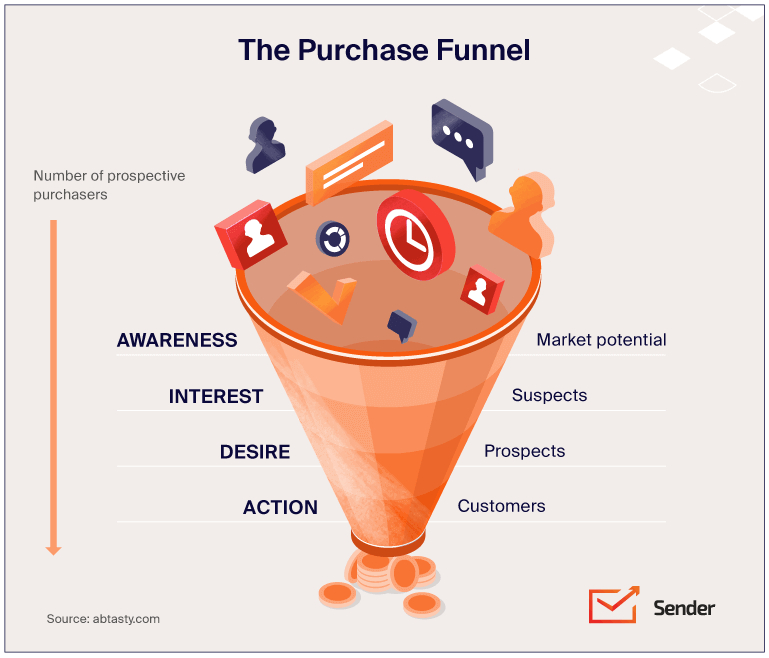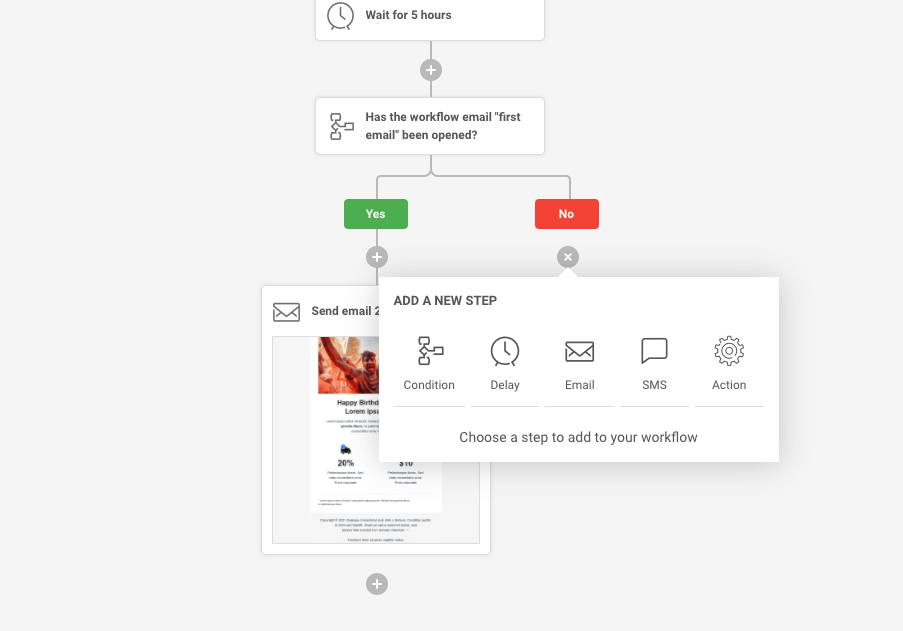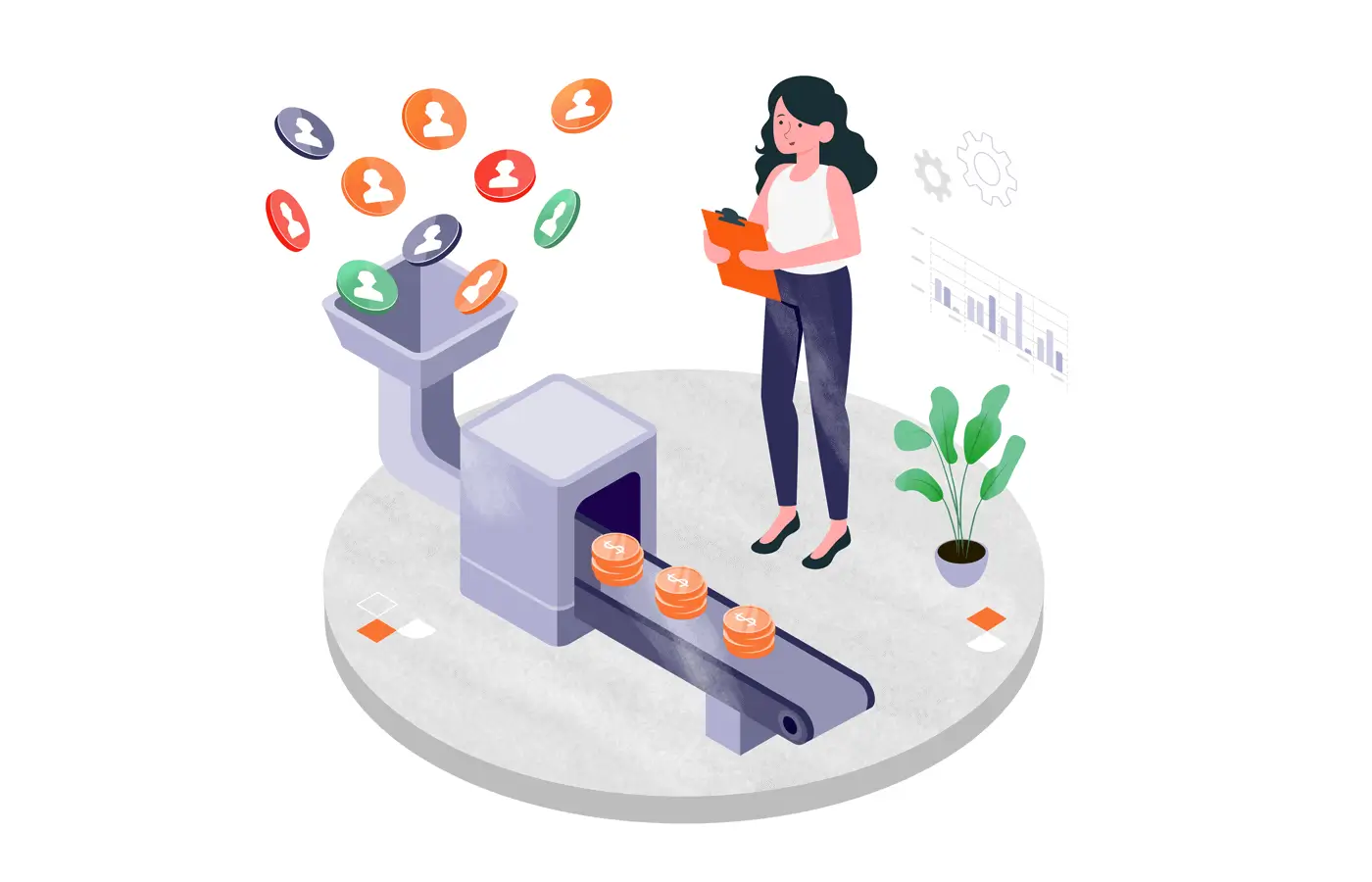Every ecommerce or retailer constantly designs business growth strategies to maximize their resources.
After all, the ultimate goal of any business is conversion.
But these conversions can be in any form, for instance, website engagement, newsletter subscriptions, direct purchases, material downloads, and more. In essence, conversion marketing involves a set of activities to increase the conversion rate.
In this article, we will discuss what conversion entails, how you can increase your conversion rate, and why it is important.
But first, let’s understand the meaning of conversion rate.
What is Conversion Rate?
In simple terms, the conversion rate is the percentage of visitors to your website who complete the desired activity. Generally, the ultimate conversion goal is to purchase the item for any business.
But in a broader sense, it is the process of moving prospects through various funnel stages toward an optimal conversion point.
It involves various channels, including social media, WhatsApp, chatbots, emails, and so much more. So, a conversion can be anything from clicking a CTA button, filling up a form, to making a purchase. Well placed call-to-action button can be a game-changer in terms of the effective conversion process.
Generating leads is comparatively cheaper than offline stores when it comes to online marketing. However, the conversion rate is much lower. A study revealed that the average landing page conversion rate across industries is 2.35%.
Let’s say you have 1k visitors on your landing page, only 1% of them will convert into customers. It means you only have 10 purchases. This is exactly why you need conversion marketing, as it aims to improve the marketing activities that can help increase your conversion rate.
Conversion Rate in Digital Marketing
The overall conversion rate in digital marketing refers to how well your website converts traffic from any source. There’s a simple formula to calculate the conversion rate:
Conversion rate = Number of sales/Number of leads
Similarly, there are conversion rates for every other channel.
Social Media Conversion Rate
It refers to how many leads were generated through various social media platforms and ultimately made a purchase.
Advertising Conversion Rate
It is calculated by understanding how much traffic was diverted to your site and converted. It can be from various marketing channels, including Google Ads, Facebook Ads, and more.
Conversion rate is a great metric to evaluate the performance of your online marketing efforts. It helps you determine which aspect of your strategy works best and how you can further improvise it.
Having said that, conversion marketing helps you identify the reasons why your leads are converting or the cause of a sudden drop in conversions. Then, you can act on your tactics and increase sales for your business.
Instead of 1%, if you can bring your conversion rate to 5% or 10%, you can see a good change in your revenue.
How to Effectively Design Conversion Marketing Strategies?
Step #1: Define Various Stages of Your Conversion Funnel

As previously mentioned, conversion has a broad definition, and it includes various actions that need to be taken on the website that ultimately nurtures your leads into paying customers.
These measurable steps or actions that you want your customers to take make up for crucial points in your conversion marketing funnel. Not every business needs to have the same touchpoint in its marketing funnel. For instance, a B2B SaaS company will draw the following outline:
- Visit the website/visit a particular landing page
- Fill out a form & download content
- Schedule a demo
- Start a free trial
- Subscribe to a plan
- Renew their plan
And for a B2C eCommerce store, it may entail:
- Visit the website
- Check out the product page
- Add to cart
- Sign up for the first purchase
- Make a repeat purchase
Step #2: Define Various KPIs as Conversion Rate Optimization Strategy
Once you have outlined the various stages, it’s time to associate key metrics with each one of them. This is necessary to measure the performance of each stage in your conversion funnel.
For instance, if you are trying to increase your leads, you need to track your web landing page traffic. If you have enough traffic but visitors still aren’t signing up for the form, you need to test and experiment with various landing page formats. A/B testing is a great way to try out different variants of landing pages and see which appeals to your audiences most.
In essence, keeping track of these KPIs will help you further improvise your conversion rate optimization strategy. Run regular tests, make necessary changes, and see if the performance improves over time. Don’t forget to include relevant CTAs to persuade visitors or leads to take desired actions.
Step #3: Focus on Quality and Not Just Quantity
Lastly, don’t just focus on increasing the number, meaning you also need to consider the quality of conversions. Quality conversions can be calculated by tracking repeat purchases, the average order value, referral leads, and others. Again, increasing your conversion value might take some time, but a conversion rate optimization strategy can really help.
Also read: 7 Ultimate Conversion Rate Optimization Practices and Tactics
Conversion Marketing Best Practices
Now that you know how to build your conversion marketing strategy, a few best practices can come in handy.
Optimize Your Website
The website is one of the important touchpoints for your customers where the majority of the final conversions take place. Therefore, you can’t afford to have a website with poor site navigation or a complicated interface where visitors have a hard time understanding your product or business in general.
Here’s a checklist that will give you a headstart:
- Easy site navigation
- Neat UI/UX design
- Keyword optimization
- Internal site linking
- Mobile responsive
- Readable text format
Also read: The Importance of Call To Actions for Websites
Engage With the Target Audience
Another crucial thing to increase your conversion rate is creating and designing campaigns for your target audience. Most often, while focusing on quantity, companies tend to create content for the mass without properly defining their buyer persona. Some of the ways to rectify the same include –
- Segment your audience. Segmenting your audience means creating a group of contacts based on different factors, like location, age, browsing history, interest, and more.
- Run targeted ads. Once you have segmented your audience, you can run targeted ads that appeal to that particular group.
- Personalization. Running targeted ads also allows you to add a touch of personalization that makes your customer feel valued. It shows that you care about them, and they are not just another fish in your sea. Using the first name while sending emails or digital business proposals, sending push notifications based on segmentation, etc., are ways to add a touch of personalization.
- Re-engage with inactive users. Retarget your inactive users and once again warm up your relationships with them. For example, send them emails with offers or discounts and see if they respond.
Also read: What is Targeted Marketing? Definition, Strategies & Examples
Using Automation Effective Conversion Process
It’s practically impossible to implement everything manually. The best way to bring efficiency is by automating your processes.
Email Marketing Automation
You can automate your whole drip email campaign using email marketing software. It allows you to pre-schedule and personalizes your emails without having to hit the send button manually.
You can even set up triggered events for sending emails whenever someone takes action on your site or previously sent emails. Some of the best email marketing software names include Sender, EngageBay, Freshworks, etc.
SMS Marketing Automation
SMS marketing can be quite effective in sending promotional offers, announcing flash sales, and more. In fact, businesses are even making the best use of WhatsApp marketing software to engage with their customers directly. Some of the leading WhatsApp marketing software you can consider using are Whatso, Kaleyra, Factorial, etc.
Marketing Automation Software
With Sender, you can do all the above and much more inside the same interface at an affordable price. Welcome or post-purchase emails, abandoned cart emails, and more are just a few clicks away.
Sender’s in-built marketing tools make it a breeze to quickly and efficiently build emails and popups using simple yet powerful features. Multichannel automation, which combines email + SMS channels, is a terrific way to create effective customer journeys and powerful campaigns.

Take Sender for a spin with zero financial commitment. The FREE Forever equips you with up to 15,000 emails a month to up to 2,500 contacts absolutely free of cost! Unlimited automation is included for free users as well.
In addition to email and SMS marketing, LinkedIn can be a powerful tool for lead generation and customer engagement. With marketing automation tools businesses can schedule and personalize outreach, automating connection requests and follow-ups.
This saves time while ensuring consistent communication, though it’s crucial to add a personal touch to maintain authenticity.
Examples of Conversion Marketing to Get Inspired From
Here are two classic examples of conversion strategies that help businesses gain some revenue.

SnackNation is a meal subscription company that targets two different markets. They segmented their audience from the very beginning and created a personalized series of welcome and exit opt-ins for each segment.
This move allowed them to provide gated content offers, and they were able to capture 31.85% of leads.
<
figure class="wp-block-image aligncenter size-full is-resized">
Buy A Kilt (now kilt Society) sells a diverse range of products, and to improve their customer experience, they wanted to see if adding product filters would help increase conversions.
Even though adding product filters is common in e-commerce stores, they still wanted to experiment and see if it makes any difference to their revenue. And the result? Their revenue spiked by 76% and saw a 26% increase in conversions.
By improving the user browsing experience, they increased their product visibility, which led to more conversions.
<
figure class="wp-block-image aligncenter size-full is-resized">
Voxpopme is a consumer research platform that provides powerful insights to its customers through video surveys.
However, the web forms they were using weren’t proving to be effective. The customers had to wait for the salesperson to get back to them once they filled up the form. It was affecting the company’s sales.
Voxpopme tried to solve the problem by adding a chatbot on their website to interact in real time with their visitors. The result?
By providing quick responses and personalized experiences, they doubled their website conversion rate.
Importance of Conversion Marketing
If you want to improve your business’s overall ROI, you can’t ignore conversion marketing.
And while you may find hundreds of tips out there for improving the conversion rate, it’s an ongoing process that largely depends on how much effort you are willing to put in. Track your consumer response, make necessary changes, and repeat the process. The ultimate goal of any business should be to provide a superior customer experience, and the rest will automatically follow.
Also read:
- 15 Landing Page Optimization Best Practices for Better Conversions
- Direct Marketing: What’s the Silent Force Driving ROI and Ways?
- What is Data-Driven Marketing? Benefits & Examples
Author Bio – Nikita is a content strategist, editor, and published poet, creating content for mainly SaaS-based companies. She writes on topics related to business, technology, and branding. In her leisure time, you will find her binge-watching TV series or exploring new cafes in town. You can find her on LinkedIn.





